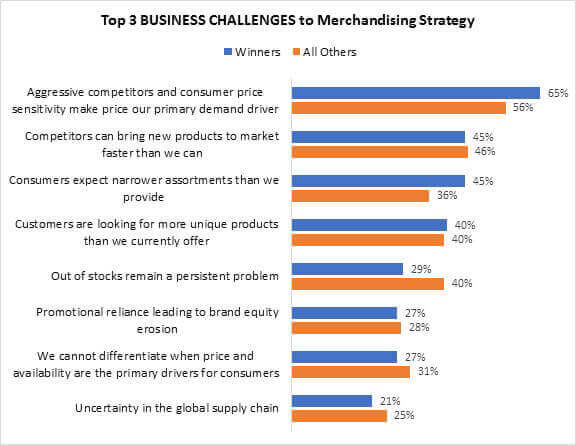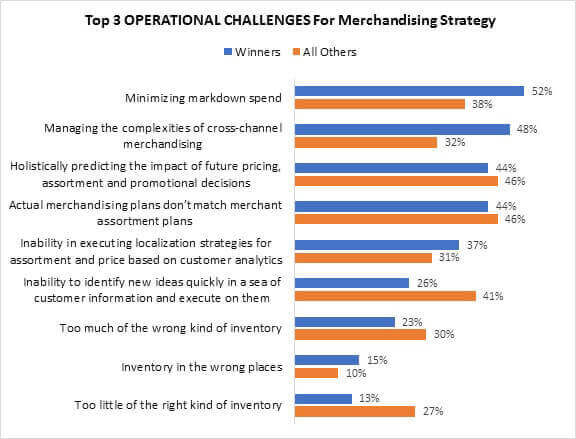Fashion Retailers Have A Merchandising Problem, Too
Paula’s article this week talks about some of the pitfalls apparel retailers tend to fall into: the debt they take on, the futile attempts try and “be like ” someone else – the list goes on. And within that piece (and everything we’ve done around fashion and lately) we note that these are difficult times to be in the apparel business. We get it. We genuinely empathize, so nothing we’re writing is meant to be critical for the fun of it – we want to help.
With that in mind, look at some of the differences we found in our recent merchandising report. We asked about the understanding level around new tools, and one of the biggest differences we found was attitudinal-based around what people sell. Fashion retailers are still more reluctant to surrender their art to science. This has caught them less-prepared for a future that will absolutely require a greater understanding of technology-enabled merchandising tools and techniques.
Figure 1: Fashion Retailers Have Been Dragging Their Feet…

Source: RSR Research, March 2019
Indeed: fashion-based retailers continue to emphasize design over discipline: apparel-based retailers trail all other retailers dramatically in their understanding of modern lifecycle price optimization, assortment optimization, and size optimization forecasting tools. And at the same time they trail other retailers in their understanding of integrated planning, allocation and replenishment solutions. The number is not insignificant. They trail by nearly 20 percent (40% to 58%); and by even more than that when it comes to markdown optimization (47% to 60%).
But what about the future? Does their willingness to embrace these all-too-necessary solutions increase?
As figure 2 demonstrates – it does not. The sting of their past stubbornness has not yet reshaped their view. Should this pattern continue, it will make the near-term future much more difficult than it needs to be.
Figure 2: …And Will Likely To Continue To

Source: RSR Research, March 2019
Apparel retailers do not keep pace on any of the options we put forth. And while some are by small margins (dynamic pricing, for example), other, more vital areas of day-to-day business reveal a significant gap in judgment. Given the impact of fast fashion, they have already seen worlds quickly change. How could fashion retailers view demand forecasting, localized assortments, and collaborative planning tools with such disproportionately low valuation for the future?
We hope this pattern comes to an end soon.
